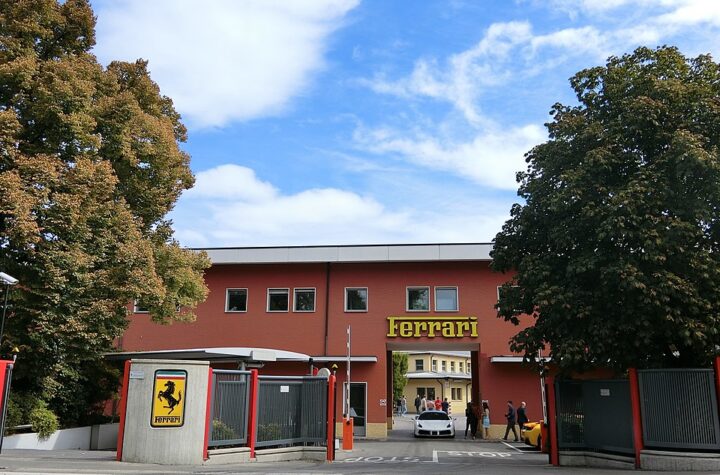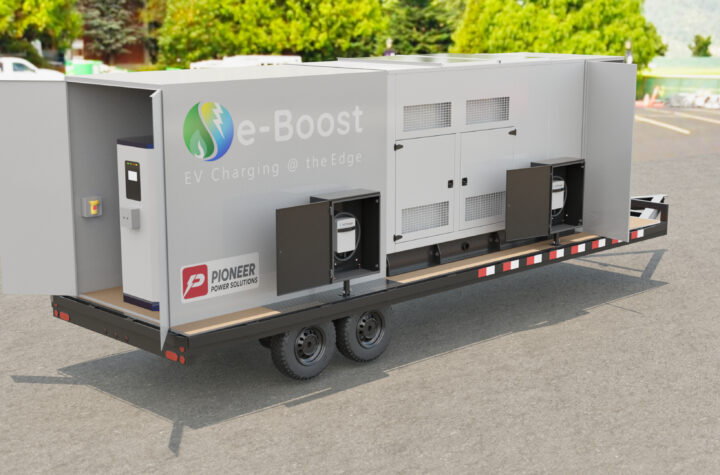
Introduction
The use of thermoplastics in automotive manufacturing is not a new concept; manufacturers have made use of composites in several applications for many years. They have been used for non-load bearing parts and interiors such as battery frames and bumpers in mass produced cars, and for more complex applications such as the monocoque for high-end sports cars. However, until recently it has not been viable for thermoplastics to be used in mass production for cars and commercial vehicles for various reasons.
The time cycle, and therefore cost, of production of parts has been a particular stumbling block for manufacturers. There is a requirement to ensure that any composites used are of the necessary safety standards for today’s vehicles, along with the consideration of the environmental impact and recyclability of components due to End-of Life Vehicle (ELV) directives.
With car manufacturer’s constantly innovating design and looking for ways to make vehicles lighter and more efficient, the use of steel for the body and chassis of cars has been facing competition from other materials such as aluminium and fibre reinforced plastic (FRP) for some time. The development of carbon fibre reinforced plastic (CFRP) manufactured from thermoplastics, and the advancement of the process technologies to make parts, has given manufacturers the opportunity to use CFRP’s in many new applications and has made the possibility of mass production a very real prospect.
High performance composites
Thermoplastics were originally derived from structural polymer composites. (1) Epoxy and polyester thermosetting resins were reinforced with continuous filaments or fibres, and although structural polymer composites demonstrated several key benefits such as low density and good insulation, they were chemically unstable. Thermoplastics such as CFRP’s do not contend with the same issue as they utilise a thermoplastic matrix. They can be heated, re-molded and cooled several times without degradation, and are prone to less damage from production machinery due to their superior strength. Crucially for the automotive industry, they are recyclable; unlike thermoset composites.
CFRP materials possess an array of properties that make them attractive for manufacturing. (2) They are typified by high strength and rigidity; they have a low density, a greater dampening effect, and are highly resistant to impacting. They have excellent electrical and thermal conductivity and modifiable thermal expansion properties.
CFRP’s have been used extensively in aerospace engineering, the Boeing 787 being one such example (3), which uses composite materials in its airframe and primary structures. Almost half of the airframe is made up of CFRP and other composites, which provides a weight saving of around 20%. Formula One is another industry which has used CFRP for many years (4); in fact McLaren International first used a CFRP monocoque for their MP4/1C model in 1981.
The automotive industry as a whole aims to follow this lead of using CFRP more widely with the intention of weight saving and fuel economy at the forefront of design. Manufacturing processes are continually being developed, and will continue to be streamlined to make it possible to produce parts in a mass production scenario, both quickly and economically.
The challenges of large scale production
One of the great challenges of using CFRP in mass production is reducing the manufacturing time for individual parts. Using the example again of a Formula One car, the design and manufacture cycle of each part is estimated at eight weeks. Clearly a high-end design like this has no place in the world of large scale production where the manufacturing cycle needs to be considerably shorter.
Research carried out by the Fraunhofer Institute for Chemical Technology ICT (5) has shown that the cycle time to produce parts from thermoset composites is often twenty minutes or more, which in the real world of car production is simply too long. Engineers at the institute have developed a process of Thermoplastic Resin Transfer Molding (T-RTM) which reduces the manufacturing cycle to around five minutes, and makes it possible to manufacture up to 100,000 parts per year. The process will be discussed in the next section, along with some of the other new technologies in manufacturing.
New process technology
Developing the processes to enable grand scale production has been part of the ongoing challenge for car manufacturers for several years. There are several methods of manufacturing composites, and variants on the process within each method. Below we look at some of the more prominent processes that may be used in the automotive industry. Research and development is ongoing in each of these areas, both in terms of improving the manufacturing process to achieve the quality of product which meets crash safety standards, and to facilitate mass production.
Resin Transfer Molding (RTM)
Resin transfer molding has previously been considered a process which is for medium volume production quantities, as it bridges the gap between slower contact molding processes and faster compression molding methods(6). Continuous strand mats and woven reinforcement is placed dry in the bottom half of the mold, which is then clamped down. A low viscosity catalysed resin is pumped into the mold, displacing the air which is forced out through vents. Metering equipment is used to control the ratio of catalyst and resin. The benefits of this type of molding are that it produces exact parts of uniform thickness with a finish to both sides, and the manufacturing process has low emissions.
Thermoplastic Resin Transfer Molding (T-RTM)
The researchers at ICT have developed this method to create their own thermoplastic resin transfer molding process, which enables them to form the composite in a single step. A pre-heated textile structure is inserted into a molding tool which is thermostatically controlled; it is inserted in such a way that the fibre structures are aligned with the anticipated stress. The activated monomer melt is then injected into the molding chamber to complete the process. By controlling the temperature during the processing stage, the engineers are able to select the minimum required processing time.
ICT showcased this method of manufacturing by producing a trunk liner for the Porsche Carrera 4 which weighed around 50% less than the conventional aluminium part, and actually improved the cars overall structure in terms of crash behaviour by calculating the optimum placement of fibres. The method has another benefit as it has been demonstrated to half the cost of processing when compared with thermoset structures.
Want to learn more about current and future developments in automotive composites?
Visit our Download Center for more articles, whitepapers and interviews:
http://bit.ly/automotive-composites
References
(1) http://www.azom.com/article.aspx?ArticleID=85
(2) http://www.engineersparadise.com/en/ipar/18832
(3) http://www.boeing.com/commercial/aeromagazine/articles/qtr_4_06/article_04_2.html
(4) http://www.formtech-composites.co.uk/compositesUKcompositesubstitution.html
(5) http://www.fraunhofer.de/en/press/research-news/2010-2011/08/making-vehicles-safer.jsp
(6) http://www.engineershandbook.com/MfgMethods/resintransfermolding.htm
(7) http://www.teufelberger.com/en/products/composite-braiding/braided-composite-parts.html














More Stories
Renesas Introduces New MOSFETs with Exceptional Performance
VicOne at CES 2025 Showcases Award-winning Cybersecurity Portfolio and Emphasize Growing Range of Best-of-Breed Partnerships
Pioneer Announces e-Boost Order Valued at $1.3 Million